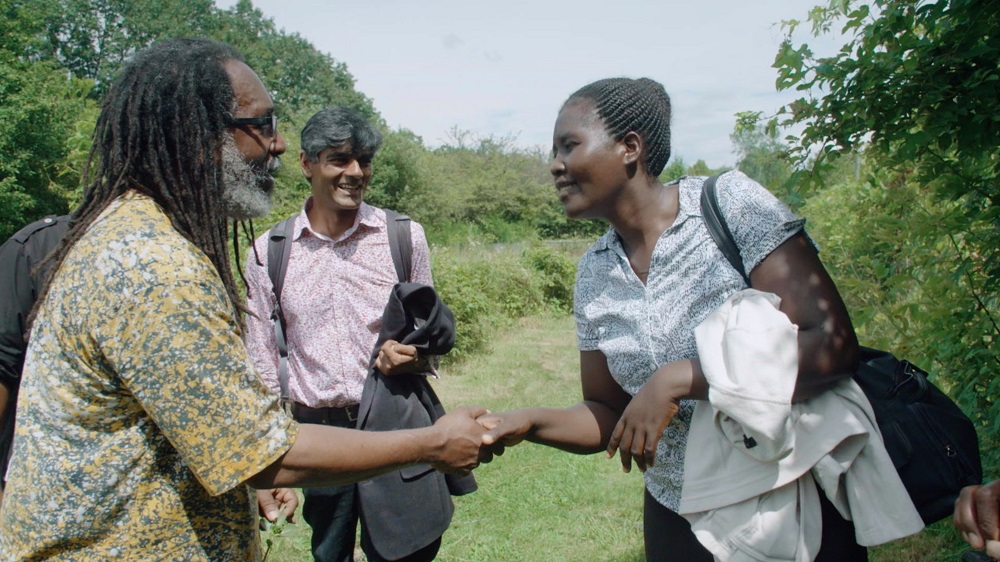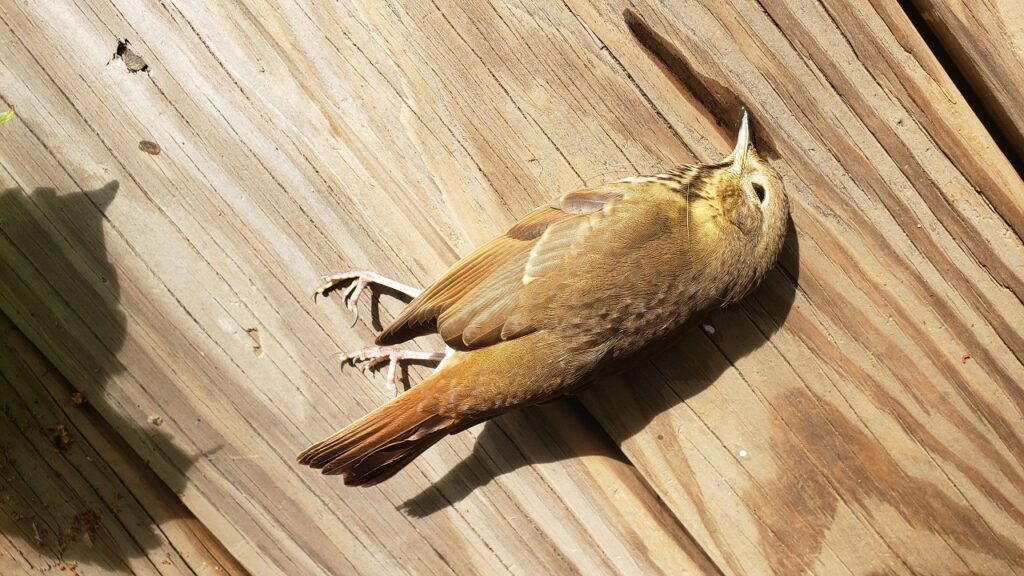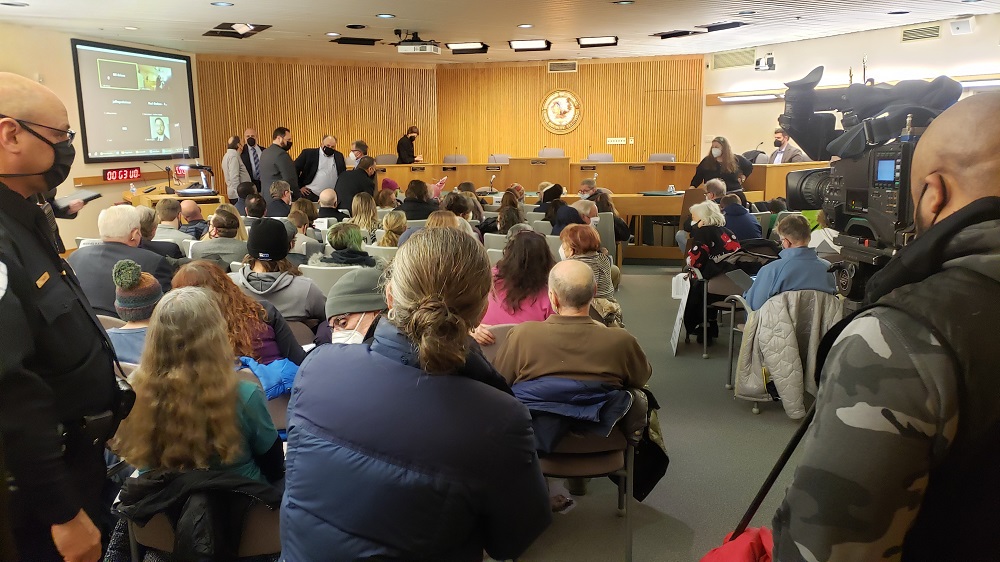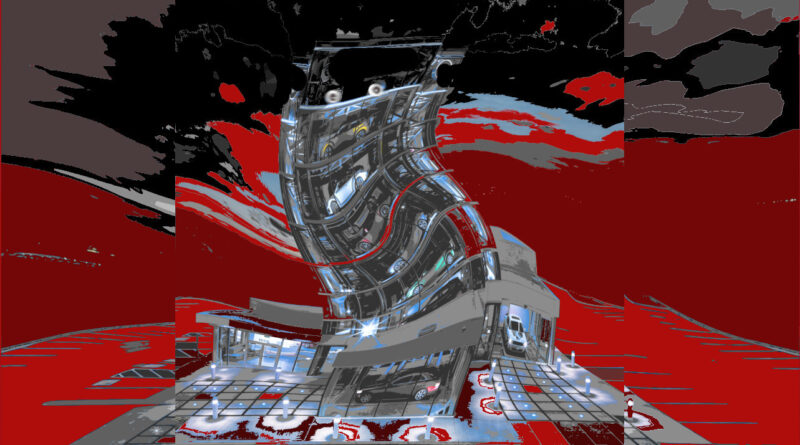Sacrificing Birds for a Marketing Gimmick
Podcast: Play in new window | Download (Duration: 2:04:25 — 58.5MB)
Subscribe: Apple Podcasts | Spotify | Android | iHeartRadio | Podchaser | Email | TuneIn | RSS | More
(February 20, 2022) On today’s program, we tackle water quality, climate change and bird mortality. Not that we can fix any of them. But that’s why we show up every Sunday. To talk to people like MWRD Commissioners, film directors and citizens who think sacrificing birds for a marketing gimmick is bad business. Here we go.
Keeping our water safe
First, we welcome MWRD Commissioner Kim Neely du Buclet. She returns to the show to talk about recycling water. The Metropolitan Water Reclamation District of Greater Chicago (MWRD) is the most important local agency that flies under most folks’ radar. Its mission is to protect the health and safety of people in Cook County by managing water quality and storm runoff. In an age of COVID-19, it is working to detect the virus in our waste water. For more than a year, MWRD has been providing water samples to a UIC lab to track virus hot spots.
Lakefront erosion is another issue that MWRD is addressing. The agency wants to restore a section of the Lake Michigan shoreline battered during heavy winter storms. In addition, it launches 2022 by funding green infrastructure and community resilience for seven projects in Cook County. We’ll talk about those efforts and more with Commissioner du Buclet.
“Turn the Tide” at the One Earth Film Festival
I can’t remember how many years I have supported the One Earth Film Festival on this show. Perhaps it’s all eleven. Who knows? But I’m happy that we’re promoting the festival again in 2022. This year’s theme is “Turn the Tide.” Those words are appropriate as we attempt to recover from a pandemic. The 17 films will be streamed online, with some in-person screenings at Chicago-based venues. As you can see, the struggle to emerge from the shadow of a virus continues.
The festival runs from March 3 to 14. Get tickets here. The launch party is on March 4 and will be both live and online. As usual, the films run the gamut of environmental stories and crises on our fragile planet. We have already previewed some of them on the show. In addition, there will be a Young Children’s Short Film Program virtual watch party at 11 a.m. March 5. And the Young Filmmakers Contest Awards Celebration will take place virtually at 3 p.m. March 12.
Raj Patel

Meanwhile, we would be remiss if we didn’t interview one of the film directors. We hit the jackpot. Raj Patel is co-director/co-producer of The Ants & the Grasshopper. Also, he is a James Beard Award winning activist and New York Times bestselling writer. He has testified about food and hunger to the US, UK and EU governments, and his book on the food system, Stuffed and Starved, has been translated into a dozen language. Additionally, he is the author of The Value of Nothing and Seven Cheap Things in Three Minutes Forty Five Seconds. However, I might be most impressed by the fact that he has been tear gassed on four continents protesting against the World Bank and WTO.
You might be surprised at the arc of The Ants & the Grasshopper. It took a decade to make. And the film morphed along the way. From the Director’s Statement:
Filming began when Steve James and Raj Patel travelled to Bwabwa, Malawi. Raj had been visiting and working with the Soils, Food and Healthy Communities (SFHC) project there, and had found a story in which women and men had transformed from being passive recipients of development advice into being active scientists and experimenters. They’d managed to end hunger by growing better crops, and by convincing men about the need for gender equality.
The film follows Anita Chitaya, who learns about climate change and is determined to explain to Americans how it affects her community. She can make men fight for gender equality, and she can end child hunger in her village. So perhaps she can change the world. There’s a lot more to the story than that, and we discuss it with Raj Patel on this show.
Sacrificing birds to sell cars

Carvana did not make a lot fans last week in Skokie. On February 7, the Village Board of Trustees voted to erect a 14-story Carvana car vending tower in the Chicago suburb. That, despite the outpouring of testimony against structure and against sacrificing birds from Skokie citizens and others. At issue is whether the glass, lighted structure will result in bird collision deaths because of its proximity to Harms Woods, part of the Forest Preserve District of Cook County. But there are other issues, including siting the tower near the Illinois Holocaust Museum and a residential complex called Optima Old Orchard Woods.
Oh, and did I mention the light pollution? And the violation of the prohibition on billboards along the Edens Expressway?
Follow the bouncing logic
In response to the objections, Skokie Mayor George Van Dusen, all but one of the Board of Trustees and, of course, Carvana, claim they have bent over backwards to accommodate objections to the tower. In a letter to the Chicago Sun-Times, Van Dusen states,
No other project in the state of Illinois has required such mitigations as this one, and the project should stand as the standard baseline for future local and state legislation on the subject.
If it is a baseline, it’s a pathetic one. Carvana and the Village agreed to reduce lighting to 50% of the Village code between 11pm and 6am, NOT turn it off altogether. According to a Village document,

During bird migration seasons, from March 15 to June 15 and August 15 to November 15, internal and external building and sign lighting on all elevations will be turned off between 12 a.m. and 7 a.m.
because, as you know, birds fly ONLY between 12am and 7am. Also,
Carvana will install and maintain American Bird Conservancy-approved, 2” x 4” patterned window markers to the exterior of all glass surfaces on the building up to 63’ 10” high to reduce the potential for bird strikes. This height exceeds the height birds fly in the area.
because, as you also know, the bird union stipulates that birds NEVER fly higher than 63’10”. BTW, the tower will be about 135 feet tall. Their scrambling only underlines how we aren’t willing to stop sacrificing birds in the Chicago area and across the country.
Noise pollution, financial uncertainty and the Skokie Caucus Party
And on and on. We haven’t even gotten into the truck noise and pollution. And whether Skokie will actually financially benefit from the arrangement. But I do want to issue a challenge. Please note the tortured logic in this Chicago Tribune editorial. See if you can tell me why they ultimately approve of the deal, other than that it’s the Chicago Tribune.
One more thing about Skokie that I didn’t know before the February 7 meeting. It’s politics are peculiar in that they allow political parties in the Village. Which means that the Skokie Caucus Party runs the Village. As it has since 1965. And about 10% of the population votes in any given election. That ain’t healthy.
Annette Prince
Today we talk to a couple of opponents of this boondoggle. Annette Prince works with the Chicago Bird Collision Monitors. She notes that it was the “tireless work of advocates and thousands of petitioners that pushed the village and used-car dealership to reluctantly provide minimal (but at least partially effective) bird protection. She writes,
We also hope that Skokie understands that even with ordinances that outline basic requirements for bird safety, every building has its own pathology and there are those with top tier threat factors (like the Carvana design in its proposed location) which call for more than the minimal mitigation that Skokie and Carvana have agreed to provide. We hope hundreds of birds will not pay with their lives over the village’s unwillingness to require the complete mitigation that local, state and national experts recommended for the heightened hazards posed by the tower that Carvana wants to build.
Kim Polka
Skokie resident Kim Polka joins us as well. She started a Change.org petition against the tower that garnered some 6,800 signatures. More than 1,200 live in Skokie. She writes,
The tower Carvana wants to build is especially dangerous to birds because of its very specific attributes (all-glass, no floors, no walls, no curtains, blinds or shades – stand at any side of the building and you can see straight through to the sky on the other side). Putting such a structure that is not comparable to any other building in Skokie at the foot of a protected nature preserve is absurd – and will be deadly to birds.
They’ll both have a lot more to say on today’s show. You don’t want to miss it.
By the way, some policy makers are seeking a way to protect birds. Illinois any newly constructed state building will be required to incorporate bird-friendly design. The Bird Safe Buildings Act was signed into law last year by Governor J. B. Pritzker. Unfortunately, it applies only to state buildings. And U. S. Representative Mike Quigley has been working on bird safe legislation for years. The latest is the Federal Bird Safe Buildings Act, introduced last year.
One more point. The “car dispenser” is a gimmick. Never forget that. It’s not necessary. It doesn’t need to be there. It’s sacrificing birds. For what?

